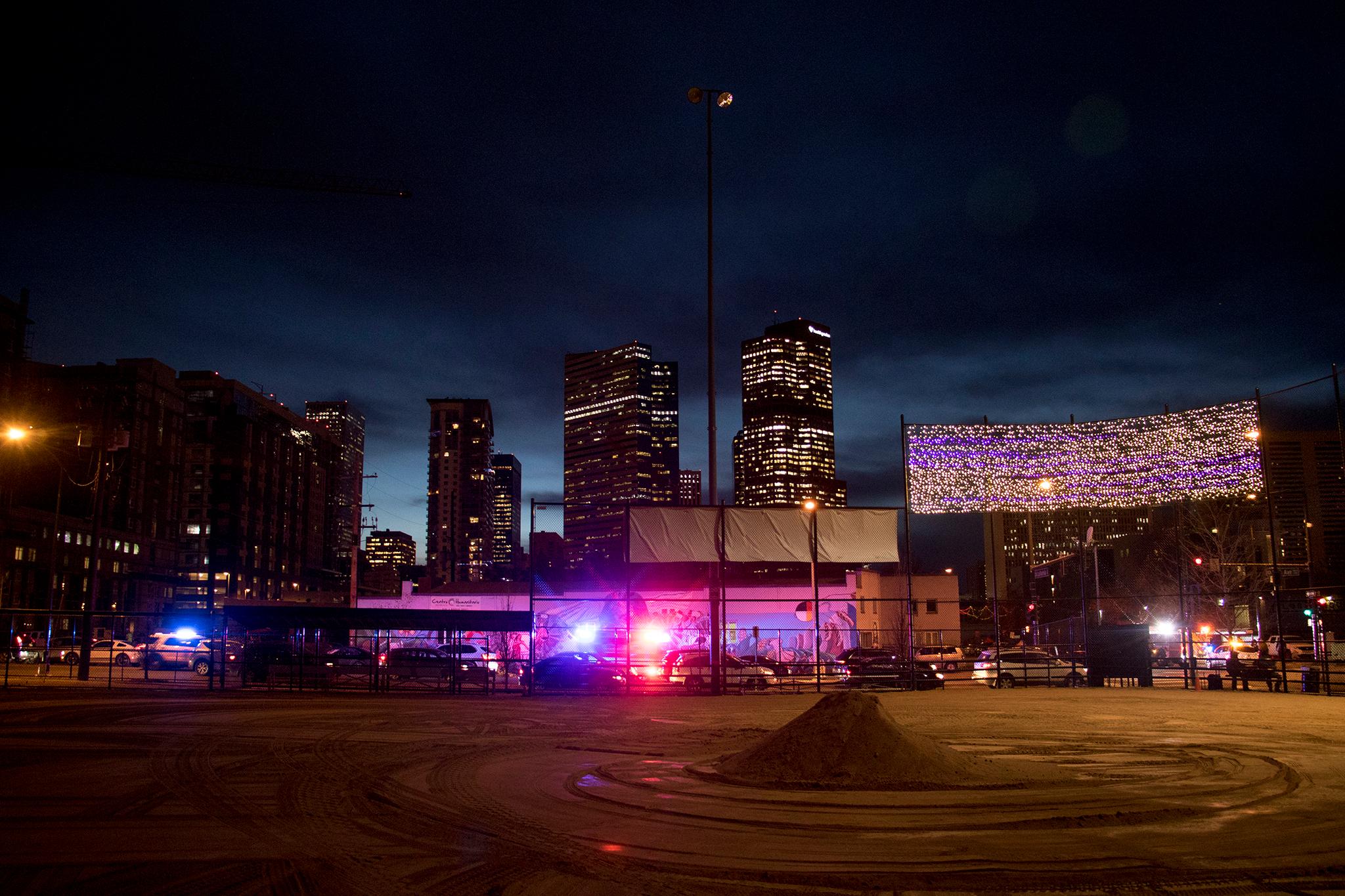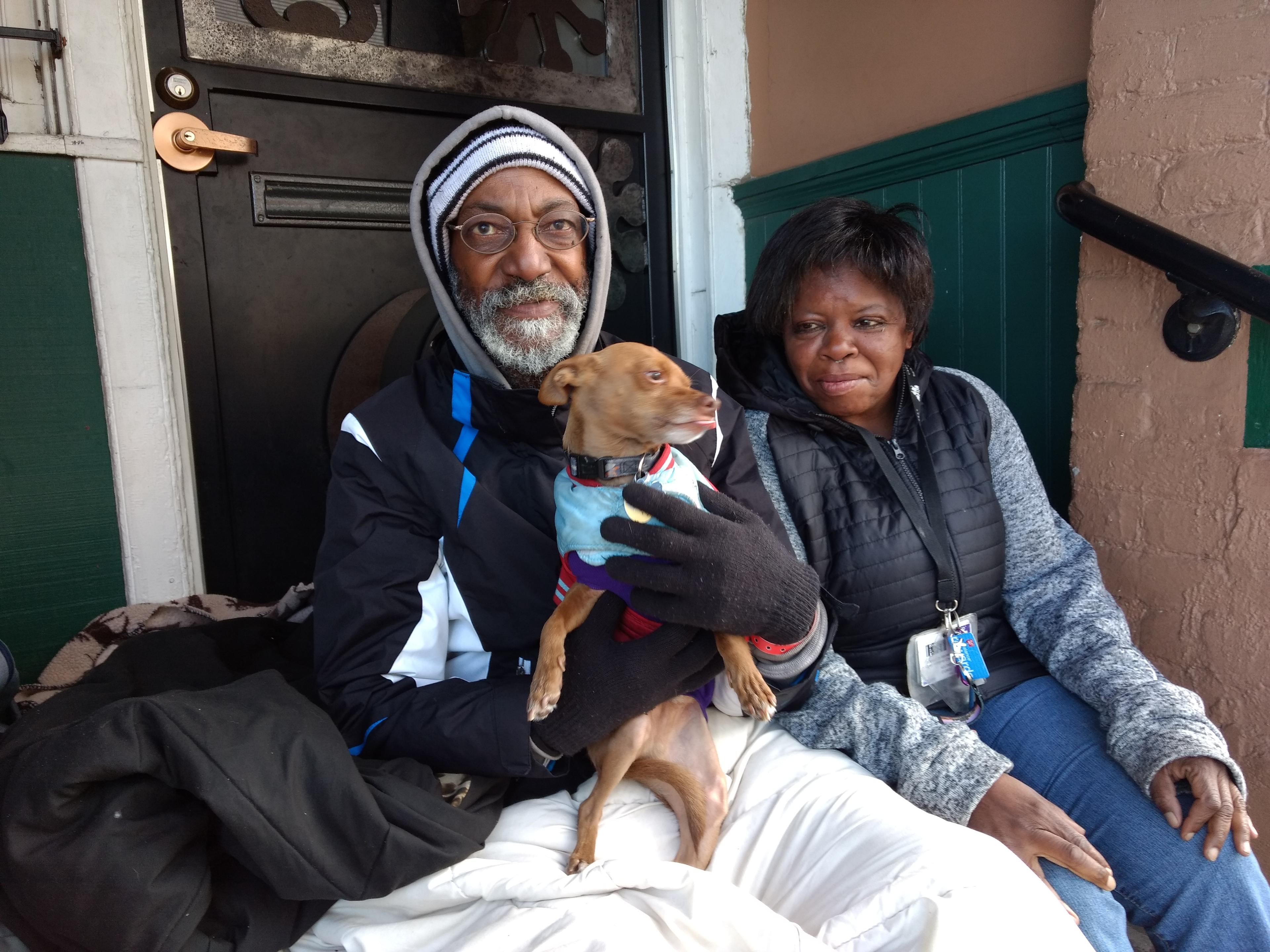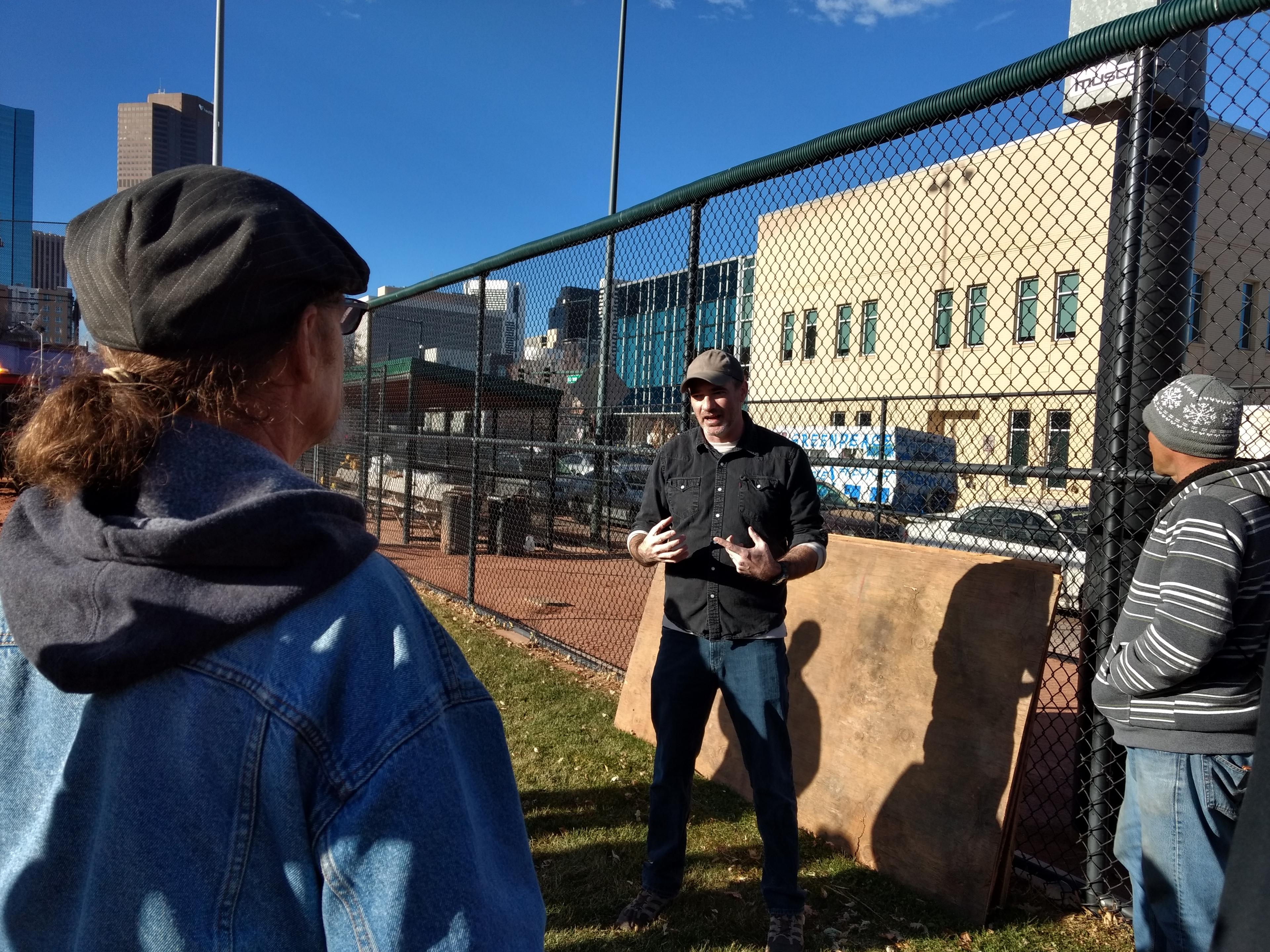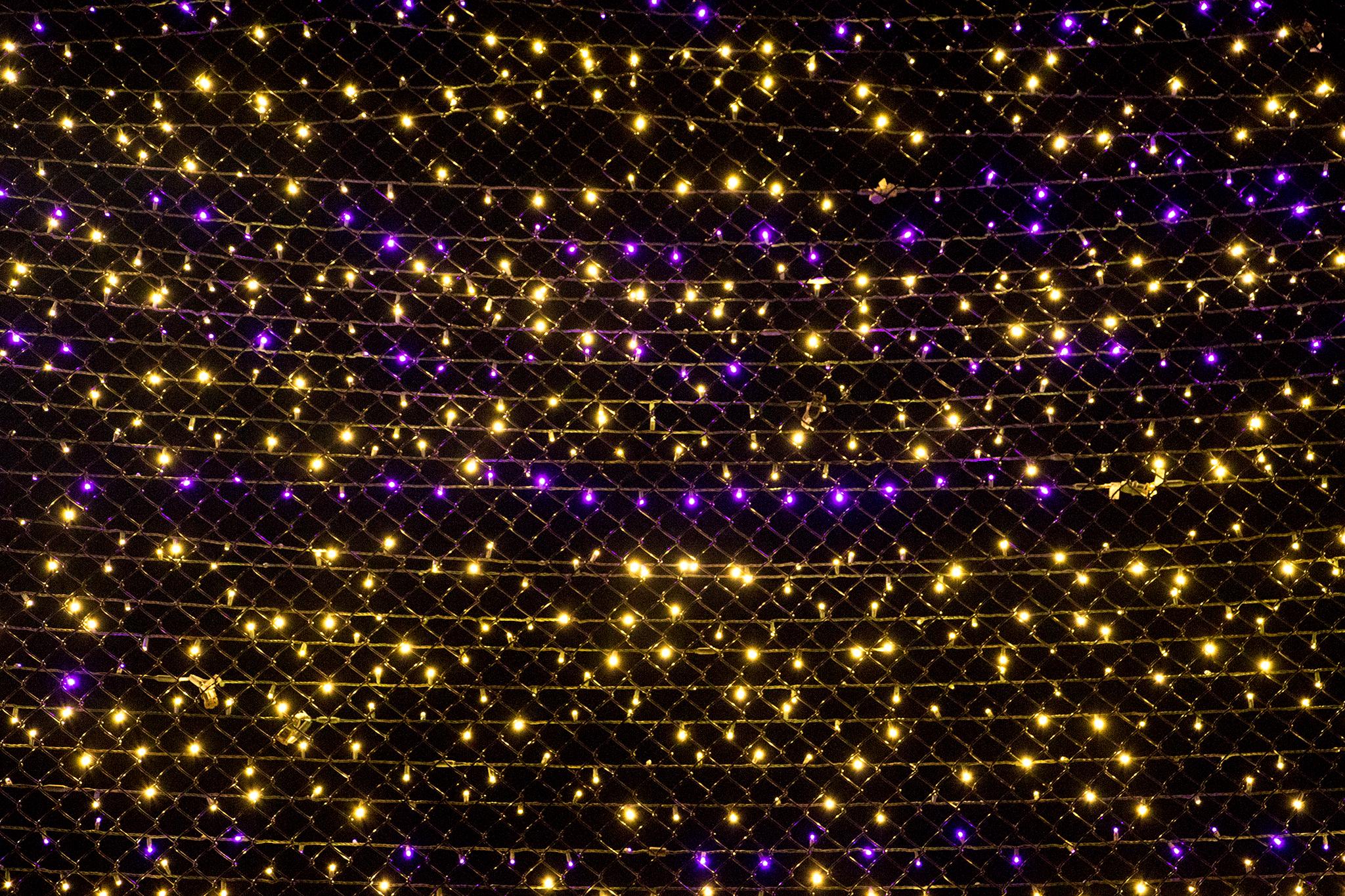Each of the 3,445 bulbs being strung on a Curtis Park baseball field backstop tells a story. The white lights -- the majority -- represent every person who had found temporary shelter during metropolitan Denver's annual homelessness count. The purple lights stand for those who slept rough that night this past January.
Chris Conner, director of the city agency Denver's Road Home that coordinates homelessness services, conceived the display that will be illuminated for the first time Wednesday evening and then every night through January.
Conner hopes it will both raise awareness of the scope and scale of the problem and start to rally volunteers for the next point-in-time homelessness survey scheduled for late January, 2019. The one-night count, while imperfect, can uncover trends and help agencies identify and respond to needs. Communities that want to receive homelessness programming through the U.S. Department of Housing and Urban Development must conduct such a survey at least every other year.
Conner arrived early with the necessities of any holiday lights project: zip ties, donuts, and strings of lights that stretched the length 25 and a half school buses.Conner had help from a fellow city agency, Parks & Recreation; his Human Services program Denver Day Works, operated by Bayaud Enterprises to offer work experience for people in homelessness; and the Metro Denver Homeless Initiative, a nonprofit that coordinates the point-in-time survey as well as services such as street outreach, emergency shelter and transitional housing across seven counties.

Not far from the symbolism as the lighting display took shape, one could see the reality.
Edward Gaston began his day under a blanket on the porch of a Park Avenue business. Gaston was at first apologetic.
"I'll move now," he said softly, thinking a reporter was the business owner.
Then he politely answered questions, describing working in landscaping, carpentry and construction after moving to Denver from Los Angeles in 1990. Then rent started to climb. It's been several years since he and his wife Temple Gaston and their five-year-old dog Bou have been able to afford permanent housing. He got a Section 8 housing voucher two weeks ago and has been visiting the nearby Blair-Caldwell library every day to use computers there to apply for apartments. During the two months that the homelessness light display will be up, bins will be located at Blair-Caldwell for collecting winter socks and boots for those in homelessness in the neighborhood. Items will be distributed by Denver's Road Home street outreach teams.
Gaston said he's not sure how long it will take to find a place with his housing voucher. But he had at least one thing to keep him going while he waits -- his wife.
"You've got to have that strong support, to support each other," he said.
Down the street, a crane hovered over a concrete-and-brick edifice where, according to a banner, "luxury apartments" are "coming soon." Gaston said he's seen apartments nearby renting for $1,400 a month, well beyond his Supplemental Security means.
He said he was grateful for Denver's homelessness support network.
"They're going to clothe you, feed you, shelter you," he said. But "what you really need is housing. Bottom line.

"They need to make more affordable housing."
The city has been chipping away at that challenge. Just this week, the City Council's Finance and Governance Committee approved a $6 million purchase and sale agreement for a development that will include affordable housing at 4995 Washington Street. The Safety, Housing, Education & Homelessness Committee meanwhile approved a $2.6 million loan agreement to preserve and rehabilitate 188 existing income-restricted housing units for seniors at 4550 West 9th Ave. and a $1.9 million loan agreement to build 133 income-restricted housing units at 1079 Ames St.
In a statement launching Conner's light display, Mayor Michael Hancock said: "At the end of 2018, in partnership with our nonprofit and charitable community, we will have ended homelessness for hundreds of people in Denver."
Just 18 percent of the lights were purple, indicating people experiencing homelessness who were unsheltered in the Denver area during last year's point-in-time. That compared to 35 percent found unsheltered nationally.
As he prepared to sit on a corner with a sign ("Little down on my luck, could use some help") in hopes of collecting enough change for coffee and breakfast, Gaston said he hoped Conner's light display would make a difference. But he wasn't sure.

"I think people are aware of what it's like. But I don't think they care," Gaston said.
"They'd like to move us out of here somewhere where we won't be seen."
Several shelters and other organizations that serve people experiencing homelessness are in the neighborhood, which periodically sees sweeps of people living on the streets by city agencies citing health concerns and complaints from businesses.
Conner acknowledged that his lights might be preaching to the choir, but pointed out Park Avenue was a busy commuter thoroughfare. He hoped passersby would carry the message further. Conner also said people such as Gaston deserved to see themselves commemorated with dignity.
The setting for the display, Sonny Lawson Park at 24th and Welton, was the first Denver ball field where Negro League games were played. Denver native Sonny Lawson was an African-American pharmacist, businessman and politician.
At an illumination ceremony Wednesday evening, Conner planned to quote Jack Kerouac, who wrote in On the Road of watching a game at the field and finding something sad in the ballfield lights. Conner found joy and melancholy in the writer's description.
"We're also putting up some sad lights," Conner said. "But doing it in the spirit of community, to engage."
Clarifies that Denver Day Works is a Denver Human Services program operated by Bayaud Enterprises.













